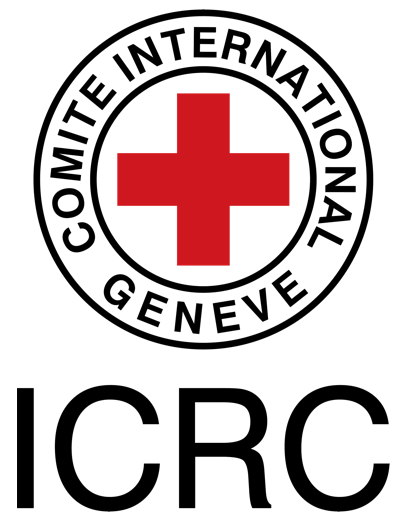Category:Musculoskeletal/Orthopaedics
Musculoskeletal Physiotherapy is the term used to describe the field of physiotherapy, which relates to disorders of the musculoskeletal system. The term musculoskeletal refers to muscles, bones, joints, nerves, tendons, ligaments, cartilage, and spinal discs. Musculoskeletal Physiotherapy utilises the basic sciences of anatomy, physiology and biomechanics as background theory in the assessment and management of patients. Approaches to management in the field of musculoskeletal physiotherapy involve not only ‘manipulation’, but also manual assessment and treatment techniques, specific therapeutic exercise, electrotherapy and advice on posture and movement disorders. In the USA this field of physiotherapy is referred to as Orthopedics.
Subcategories
This category has the following 9 subcategories, out of 9 total.
Pages in category "Musculoskeletal/Orthopaedics"
The following 200 pages are in this category, out of 600 total.
(previous page) (next page)I
K
L
- Lachman Test
- Lateral Collateral Ligament of the Knee
- Lateral Epicondylitis
- Lateral Ligament Injury of the Ankle
- Lateral meniscus
- Legg-Calve-Perthes Disease
- Levator Scapulae
- Lever Sign Test
- Lifestyle Medicine and Office Ergonomic Strategies for Managing Low Back Pain
- Lifestyle Medicine, Exercise and Nutrition for Managing Chronic Low Back Pain
- Lifestyle Medicine, Sleep Hygiene and Psychological Well-being for Managing Chronic Low Back Pain
- Ligament Sprain
- Ligamentum flavum
- Linscheid Squeeze Test
- Load and Shift
- Long Term Musculoskeletal Conditions
- Low Back Pain and Pregnancy
- Low Back Pain and Young Athletes
- Low Back Pain Guidelines
- Lower Crossed Syndrome
- Lower Limb Amputees and Low Back Pain
- Ludington’s Test
- Lumbar Assessment
- Lumbar Differential Diagnosis
- Lumbopelvic Manipulation technique
- Lumbopelvic Rhythm
- Lunate Instability
- Lyme Disease
M
- Manual Therapy
- Matrix Rhythm Therapy
- Maudsley's test
- McKenzie Method
- McKenzie Side Glide Test
- McMurrays Test
- Medial Meniscus
- Meniscal Repair
- Menopause Associated Arthralgia
- Metatarsalgia
- Middle Scalene
- Mill’s Test
- Modern Cupping from Clinical Approach
- Modic Changes
- Morel-Lavallée lesion
- Moving Patellar Apprehension Test
- Moving Valgus Stress Test
- Mulligan Concept
- Muscle Disorders
- Muscle Length Assessment and Treatment Related to Patellofemoral Pain
- Muscle Spindles
- Muscle Strain
- Muscles of Respiration
- Coccygodynia (Coccydynia, Coccalgia, Tailbone Pain)
- Greater Trochanteric Pain Syndrome
- Knee Rotary Instability
- Low Back Pain
- Lumbar Discogenic Pain
- Myofascial Pain
- Patellar Taping
- Patellar Tendinopathy
- Tendon Anatomy
- Tendon Biomechanics
- Mylohyoid Muscle
- MYMOP - Measure Yourself Medical Outcome Profile
- Myofascial Pain Evaluation and Treatment
- Myositis Ossificans
- Myotendinous Junction
N
O
- O'Briens Test
- Obliquus Capitis Superior
- Obstetric Fistula
- Olerud-Molander Ankle Score
- Optimal Screening for Prediction of Referral and Outcome Yellow Flag
- Accessory Navicular Bone
- Acetabulum Fracture
- Achilles Tendon
- Ankle and Foot Fractures
- Ankle arthrodesis
- Ankle Osteoarthritis
- Ankle Sprain
- Anterior Knee Pain
- Anterior Shoulder Instability
- Beighton score
- Benign Positional Paroxysmal Vertigo (BPPV)
- Blount's Disease
- Calcaneal Spurs
- Calcific Tendinopathy of the Shoulder
- CBT Approach to Chronic Low Back Pain
- Cervical rotation lateral flexion test
- Chopart fracture-dislocation
- Chronic Ankle Instability
- Chronic Low Back Pain
- Classification of Fulkerson and Shea for Malalignment in a Patient with Chronic Patellofemoral Pain
- Classification Of Low Back Pain Using Shirley Sahrmann’s Movement System Impairments, An Overview Of The Concept
- Cobb Angle
- Compartment Syndrome of the Foot
- Core Stability
- Cubital Tunnel Syndrome
- Cycling Biomechanics
- Danis-Weber Classification of Ankle Fractures
- Dead Arm Syndrome
- Diagnostic Approaches to Low Back Pain - Comparing Maitland, McKenzie and Movement Impairment Syndromes
- Dial Test
- Distal femoral fracture
- Double Crush Syndrome
- Drop Arm Test
- Extensor Pollicis Longus
- Facet Joint Syndrome
- Failed Back Surgery Syndrome
- Feasibility of Applying a Simple Method to Quantify Clinical Experience: A Case Report
- Femoral Fractures
- Femoroacetabular Impingement
- Flexor Pollicis Longus
- Gait
- Gait Definitions
- Hallux Rigidus
- Hallux Valgus
- Hip Dysplasia
- Hip Labral Disorders
- Infraspinatus
- Insall-Salvati Ratio
- Instrumented Gait Analysis
- Internal Impingement of the Shoulder
- Javelin Thrower's Elbow
- Kemp Test
- Labral Tear
- Lateral Collateral Ligament Injury of the Knee
- Lisfranc Injuries
- Low Back Pain and Breathing Pattern Disorders
- Lumbar Facet Joint Injections
- Lumbar Instability
- Lumbar Spine Fracture
- Lumbar Traction
- Manual Therapy: Knee
- Medial Collateral Ligament Injury of the Knee
- Medial Tibial Stress Syndrome
- Morton's Neuroma
- Multiligament Injured Knee Dislocation
- Muscle Strength of the Ankle
- Noble's test
- Ober's Test
- Osgood-Schlatter Disease
- Osteomyelitis
- Ottawa Ankle Rules
- Paediatric Knee
- Pain Mechanisms
- Patellar dislocation
- Patellar Fractures
- Patellar malalignment
- Patellar tendon tear
- PCL Reconstruction
- Pellegrini-Stieda syndrome
- Peroneal Tendinopathy
- Pes Anserinus Bursitis
- Piriformis Syndrome
- Pittsburgh Knee Rules
- Plantar Fasciitis
- Plantar Heel Pain
- Popliteus strain
- Popliteus Tendinopathy
- Posterior Cruciate Ligament Injury
- Posterior Knee Pain
- Posterior Tibial Tendon Dysfunction
- Pott's fracture
- Proprioception
- Quadriceps Muscle Strain
- Quadriceps Tendon Tear
- Regional Interdependence in Low Back Pain: Interventions
- Retrocalcaneal Bursitis
- Rotator Cuff Tears
- Rotator Cuff Tendinopathy






